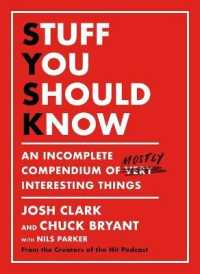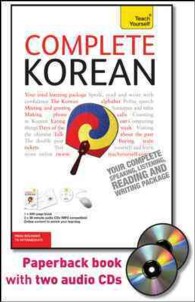- ホーム
- > 洋書
- > 英文書
- > Science / Mathematics
Full Description
In 2012, using easy-to-understand text and examples, the first edition of this book explained how electric utilities "work," and how they plan (or should plan) for the future, by:
"Creating" a hypothetical electric utility
Explaining how (and why) this utility will operate its system of generating units
Guiding readers through a planning analysis for the utility, examining various resource options (solar, new gas-fueled generation, and conservation)
Introducing four Fundamental Principles of Resource Planning that should guide utilities as they plan for the future
The first edition material, with significant updates, now appears as Part I of the second edition of this book. Part II of this book then presents six all-new chapters that address the challenges (and opportunities) of moving toward a zero-carbon future. Using the same hypothetical utility, with its new goal to utilize solar and batteries to serve 100% of its customers' energy with zero carbon emissions by a future "target"year, Part II of this book addresses many subjects, including:
The enormous amount of MW of new solar and batteries the utility will need to add
Why certain characteristics of new solar and battery additions change as increasing amounts of these resources are added
In the years prior to achieving its zero-carbon goal, how the hourly operation of the utility's existing fossil-fueled generators, plus the new solar, will change (and why the stability of the transmission grid will be challenged)
With this second edition, author Dr. Steven Sim again applies the experience and insights he gained from more than 30 years of resource planning for Florida Power & Light (FPL). As one of the largest electric utilities in the United States, FPL has faced a multitude of resource planning challenges, including how to get to zero carbon. During this time period, Dr. Sim performed and directed thousands of analyses designed to address these challenges. He also served as an expert witness in dozens of regulatory hearings, addressing both the economics of resource options and the non-economic impacts (air emissions, system reliability, fuel usage, etc.) associated with these options.
Contents
Part I: The Fundamentals of Electric Utility Resource Planning. 1. Introduction 2. How Does an Electric Utility Actually "Work" 3. Overview of Utility Resource Planning. 4. Reliability Analyses for Our Utility System. 5. Resource Option Analyses for Our Utility System: Supply Options. 6. Resource Option Analyses for Our Utility System: DSM Options. 7. Final Resource Option Analyses for Our Utility System. 8. Are We Done Yet? Other Factors Than Can (and Will) Complicate.Part II: Moving Towards Zero Carbon. 9. An Overview of Part II. 10. Moving Towards Zero Carbon: How Many MW of New Resources Will Be Needed? 11. Moving Towards Zero Carbon: Resource Planning Considerations for Solar (PV) Resources. 12. Moving Towards Zero Carbon: Resource Planning Considerations for Battery Storage Resources. 13. Moving Towards Zero Carbon: Ramifications for System Operations and Transmission Planning. 14. Final Thoughts (Including Some Opinions). Appendix A: Fundamental Principles of Electric Utility Resource Planning. Appendix B: Glossary of Terms. Appendix C: Mini-Lesson #1: Concepts of Revenue Requirements, Present. Valuing of Costs and Discount Rates, Cumulative Present Value of Revenue Requirements, and Levelized Costs. Appendix D: Mini-Lesson #2: Further Discussion of the Limitations of a Screening Curve Analytic Approach. Appendix E: Mini-Lesson #3: Further Discussion of the RIM and TRC Preliminary Cost-Effectiveness Screening Tests for DSM.








